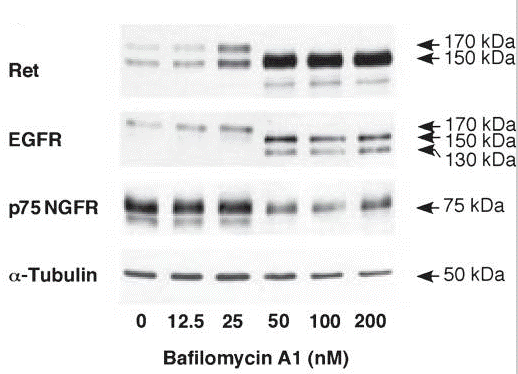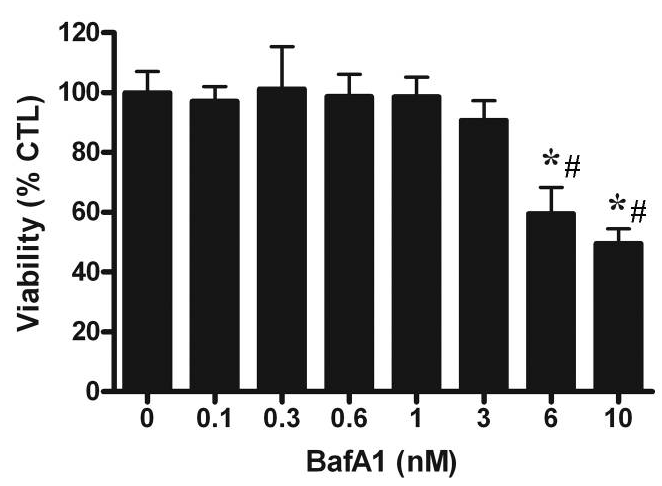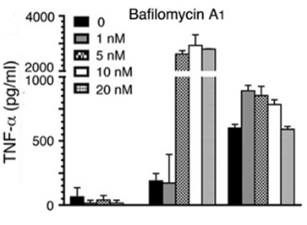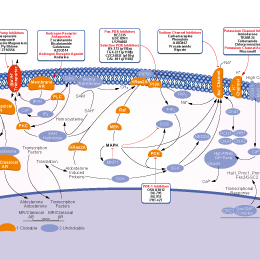
- Bioactive Compounds
- By Signaling Pathways
- PI3K/Akt/mTOR
- Epigenetics
- Methylation
- Immunology & Inflammation
- Protein Tyrosine Kinase
- Angiogenesis
- Apoptosis
- Autophagy
- ER stress & UPR
- JAK/STAT
- MAPK
- Cytoskeletal Signaling
- Cell Cycle
- TGF-beta/Smad
- DNA Damage/DNA Repair
- Compound Libraries
- Popular Compound Libraries
- Customize Library
- Clinical and FDA-approved Related
- Bioactive Compound Libraries
- Inhibitor Related
- Natural Product Related
- Metabolism Related
- Cell Death Related
- By Signaling Pathway
- By Disease
- Anti-infection and Antiviral Related
- Neuronal and Immunology Related
- Fragment and Covalent Related
- FDA-approved Drug Library
- FDA-approved & Passed Phase I Drug Library
- Preclinical/Clinical Compound Library
- Bioactive Compound Library-I
- Bioactive Compound Library-Ⅱ
- Kinase Inhibitor Library
- Express-Pick Library
- Natural Product Library
- Human Endogenous Metabolite Compound Library
- Alkaloid Compound LibraryNew
- Angiogenesis Related compound Library
- Anti-Aging Compound Library
- Anti-alzheimer Disease Compound Library
- Antibiotics compound Library
- Anti-cancer Compound Library
- Anti-cancer Compound Library-Ⅱ
- Anti-cancer Metabolism Compound Library
- Anti-Cardiovascular Disease Compound Library
- Anti-diabetic Compound Library
- Anti-infection Compound Library
- Antioxidant Compound Library
- Anti-parasitic Compound Library
- Antiviral Compound Library
- Apoptosis Compound Library
- Autophagy Compound Library
- Calcium Channel Blocker LibraryNew
- Cambridge Cancer Compound Library
- Carbohydrate Metabolism Compound LibraryNew
- Cell Cycle compound library
- CNS-Penetrant Compound Library
- Covalent Inhibitor Library
- Cytokine Inhibitor LibraryNew
- Cytoskeletal Signaling Pathway Compound Library
- DNA Damage/DNA Repair compound Library
- Drug-like Compound Library
- Endoplasmic Reticulum Stress Compound Library
- Epigenetics Compound Library
- Exosome Secretion Related Compound LibraryNew
- FDA-approved Anticancer Drug LibraryNew
- Ferroptosis Compound Library
- Flavonoid Compound Library
- Fragment Library
- Glutamine Metabolism Compound Library
- Glycolysis Compound Library
- GPCR Compound Library
- Gut Microbial Metabolite Library
- HIF-1 Signaling Pathway Compound Library
- Highly Selective Inhibitor Library
- Histone modification compound library
- HTS Library for Drug Discovery
- Human Hormone Related Compound LibraryNew
- Human Transcription Factor Compound LibraryNew
- Immunology/Inflammation Compound Library
- Inhibitor Library
- Ion Channel Ligand Library
- JAK/STAT compound library
- Lipid Metabolism Compound LibraryNew
- Macrocyclic Compound Library
- MAPK Inhibitor Library
- Medicine Food Homology Compound Library
- Metabolism Compound Library
- Methylation Compound Library
- Mouse Metabolite Compound LibraryNew
- Natural Organic Compound Library
- Neuronal Signaling Compound Library
- NF-κB Signaling Compound Library
- Nucleoside Analogue Library
- Obesity Compound Library
- Oxidative Stress Compound LibraryNew
- Plant Extract Library
- Phenotypic Screening Library
- PI3K/Akt Inhibitor Library
- Protease Inhibitor Library
- Protein-protein Interaction Inhibitor Library
- Pyroptosis Compound Library
- Small Molecule Immuno-Oncology Compound Library
- Mitochondria-Targeted Compound LibraryNew
- Stem Cell Differentiation Compound LibraryNew
- Stem Cell Signaling Compound Library
- Natural Phenol Compound LibraryNew
- Natural Terpenoid Compound LibraryNew
- TGF-beta/Smad compound library
- Traditional Chinese Medicine Library
- Tyrosine Kinase Inhibitor Library
- Ubiquitination Compound Library
-
Cherry Picking
You can personalize your library with chemicals from within Selleck's inventory. Build the right library for your research endeavors by choosing from compounds in all of our available libraries.
Please contact us at info@selleckchem.com to customize your library.
You could select:
- Antibodies
- Bioreagents
- qPCR
- 2x SYBR Green qPCR Master Mix
- 2x SYBR Green qPCR Master Mix(Low ROX)
- 2x SYBR Green qPCR Master Mix(High ROX)
- Protein Assay
- Protein A/G Magnetic Beads for IP
- Anti-Flag magnetic beads
- Anti-Flag Affinity Gel
- Anti-Myc magnetic beads
- Anti-HA magnetic beads
- Poly DYKDDDDK Tag Peptide lyophilized powder
- Protease Inhibitor Cocktail
- Protease Inhibitor Cocktail (EDTA-Free, 100X in DMSO)
- Phosphatase Inhibitor Cocktail (2 Tubes, 100X)
- Cell Biology
- Cell Counting Kit-8 (CCK-8)
- Animal Experiment
- Mouse Direct PCR Kit (For Genotyping)
- New Products
- Contact Us
research use only
Bafilomycin A1 (Baf-A1) Proton Pump inhibitor
Bafilomycin A1(Baf-A1) is a vacuolar H+-ATPase inhibitor with IC50 of 0.44 nM. Bafilomycin A1 is found to inhibit autophagy while induces apoptosis.

Chemical Structure
Molecular Weight: 622.83
Purity & Quality Control
Batch:
Purity: >97%
97
Products Often Used Together with Bafilomycin A1 (Baf-A1)
It and 3-Methyladenine (3-MA) combination plus irradiation leads to more pronounced and prolonged DNA damage in glioma and breast cancer cells.
Explore the signalling pathways involved in ARV S1133 regulated switch from autophagy to apoptosis.
Related Products
| Related Products | Ilaprazole sodium Ilaprazole Tenatoprazole Revaprazan Hydrochloride | Click to Expand |
|---|---|---|
| Related Compound Libraries | FDA-approved Drug Library Natural Product Library Ion Channel Ligand Library Exosome Secretion Related Compound Library Calcium Channel Blocker Library | Click to Expand |
Signaling Pathway
Cell Culture and Working Concentration
| Cell Lines | Assay Type | Concentration | Incubation Time | Formulation | Activity Description | PMID |
|---|---|---|---|---|---|---|
| human H4 cells | Function assay | 0.4 μM | 24 h | Induction of light chain 3-GFP level in human H4 cells at 0.4 uM after 24 hrs by high throughput fluorescence microscopy relative to control | 18024584 | |
| RAW 264.7 cells | Function assay | 100 nM | Antimicrobial activity against Salmonella enterica Typhimurium 14028 infected in RAW 264.7 cells assessed as increased nitric oxide production in infected cells at 100 nM | 19307359 | ||
| mouse RAW264.7 cells | Apoptosis assay | 100 nM | 16 h | Induction of apoptosis in mouse RAW264.7 cells assessed as late apoptotic cells at 100 nM after 16 hrs using annexin V-propidium iodide staining by flow cytometry | 19307359 | |
| human HeLa cells | Function assay | 400 nM | Induction of autophagy in human HeLa cells expressing EGFP-LC3 assessed as increase in LC3-2 level at 400 nM | 18391949 | ||
| human MCF7 cells | Function assay | 4 h | Inhibition of rapamycin-induced autophagy in human MCF7 cells expressing EGFP-LC3 assessed as decrease in EGFP levels at 100 nM after 4 hrs by Western blotting relative to control | 20028134 | ||
| RAW 264.7 cells | Bactericidal activity assay | 100 nM | 16 h | Bactericidal activity against Salmonella enterica Typhimurium 14028 infected in RAW 264.7 cells assessed as decrease in bacterial growth yield at 100 nM after 16 hrs postinfection by flow cytometry in presence of 10 ug/ml of intracellular replication inhi | 19307359 | |
| RAW 264.7 cells | Antimicrobial activity assay | 100 nM | Antimicrobial activity against Salmonella enterica Typhimurium 14028 infected in RAW 264.7 cells assessed as increased nitric oxide production in infected cells at 100 nM | 19307359 | ||
| RAW 264.7 cells | Antimicrobial activity assay | 100 nM | 30 mins | Antimicrobial activity against Salmonella enterica Typhimurium 14028 infected in RAW 264.7 cells assessed as inhibition of bacterial replication at 100 nM treated 30 mins before infection measured after 2 to 16 hrs postinfection by flow cytometry | 19307359 | |
| rat 3Y1 cells | Function assay | Induction of morphological changes in rat 3Y1 cells assessed as elongation of cells | 29701963 | |||
| human Huh7.5.1 cells | Antiviral activity | 3 h | Antiviral activity against HCV genotype 2a JFH-1 in human Huh7.5.1 cells assessed as reduction of viral entry up to 3 hrs by luciferase assay | 26396683 | ||
| Click to View More Cell Line Experimental Data | ||||||
Mechanism of Action
| Targets |
|
|---|
In vitro |
||||
| In vitro | Bafilomycin A1 is a toxic macrolide antibiotic derived from Streptomyces griseus. Bafilomycin A1 inhibits the short circuit current induced by the outer mantle epithelium (OME). The IC50 and maximum inhibition dose of Bafilomycin A1 are 0.17 μM and 0.5 μM, respectively. [2] In addition, Bilomycin A1 inhibits the acid influx with an IC50 value of 0.4 nM. Bafilomycin A1 inhibits the acidification dose-dependently resulting in a lower quenching, and thus a higher fluorescence. [3] Bafilomycin A1 prevents the vacuolization of Hela cells induced by H. pylori, with an inhibitory concentration giving 50% of maximal (ID50) of 4 nM. Bafilomycin A1 is also very efficient in restoring vacuolated cells to a normal appearance. [4] Bafilomycin A1 also affects the transport of endocytosed material from early to late endocytic compartments. Bafilomycin not only dissipates the low endosomal pH but also blocks transport from early to late endosomes in HeLa cells. [5] Bafilomycin A1 at doses of 0.1-1 μM completely inhibits the acidification of lysosomes revealed by the incubation with acridine orange in BNL CL.2 and A431 cells. [6] When Bafilomycin A1 is added to Hanks' balanced salt solution, endogenous protein degradation is strongly inhibited and numerous autophagosomes accumulated in H-4-II-E cells. Bafilomycin A1 also prevents the appearance of endocytosed HRP in autophagic vacuoles. [7] | |||
|---|---|---|---|---|
| Kinase Assay | ATPase enzyme activity assays | |||
| The ATPase enzyme assay medium contains 6 mM MgSO4, 50 mM HEPES (pH 7.4), 200 mM Na2SO3 (V-ATPase activator), 0.5 mM sodium ortho-vanadate (P-ATPase inhibitor), 0.5 mM sodium azide (F-ATPase inhibitor) and 3 mM Na2ATP. This medium (1.0 mL), with or without the addition of the V-type ATPase inhibitor bafilomycin A1, is incubated with the filtered homogenate (0.1 mL) for 60 minutes at 23–25 °C. The reaction is stopped by the addition of 1 mL of TCA 3%. Spectrometric blanks are prepared as for the enzyme assay with the exception that the tissue sample is added after the acid. Phosphate analysis is accomplished by adding 2 mL of 1-butanol and 0.2 mL molybdate solution (5 g ammonium molybdate, 22 mL H2SO4 to 100 mL). After vortexing for 15 seconds the solution is neutralised with 0.5 mL citrate solution (100 g/500 mL, pH 7.0) and again vortexed for 15 seconds. The solution is then centrifuged (2000 × g; 3 minutes) to separate the butanol phase and the absorbance of this phase is read at 400 nm. Standards of orthophosphate are prepared (0.1 μM–2.0 μM) and treated in the same way as the enzyme activity assays. Enzyme activity is expressed in μmol of orthophosphate liberated per hour and per milligram of protein. V-ATPase activity is considered to be the difference between the total ATPase activity measured in the presence of Na2SO3, sodium orthovanadate and sodium azide and the ATPase activity measured in the presence of these reagents and of the specific V-ATPases inhibitor Bafilomycin A1. | ||||
| Cell Research | Cell lines | HeLa cells | ||
| Concentrations | ~20 nM | |||
| Incubation Time | 20 hours | |||
| Method | H. pylori bacteria extract is treated with inhibitors, before addition to HeLa cells, as follows: DCCD 10 mM for 1 hour at 30 ºC; NBD-CI 100 μM for 1 hour at 30 ºC and the reaction is blocked with glycine 10 mM final concentration; NEM 275 μM for 1 hour at 30 ºC and the reaction is blocked by addition of β-mercaptoethanol 275 mM; Mg-ATP 14 μM for 1 hour at 0 ºC; 100 μM KNO3 and 14 μM Mg-ATP for 1 hour at 30 μM; NaCO3 100 μM, pH 11 for 1 hour at 0 ºC. The bacterial extract is then added to cell with a 40-fold dilution at a final concentration of 0.65 mg/mL. Controls are HeLa cells incubated with untreated bacterial extracts and cells treated with inhibitor Bafilomycin A1 under the same conditions as bacterial extracts, at the same concentrations or after a 40-fold dilution. The vacuotating activity of the bacterial extracts is assayed. |
|||
| Experimental Result Images | Methods | Biomarkers | Images | PMID |
| Western blot | Ret / EGFR / p75 NGFR |

|
21559479 | |
| Growth inhibition assay | Cell viability |

|
20534000 | |
| Immunofluorescence | AIF LC3 |

|
25512644 | |
| ELISA | TNF-alpha |

|
26240140 | |
In Vivo |
||
| In vivo | Bafilomycin A1 (1 μM and 0.1 μM) completely inhibits the resorptive activity of cultured osteoclasts. [8] Bafilomycin A1 dose-dependently inhibits the rate of Na+ uptake in young tilapia with a Ki of 0.16 μM. [9] | |
|---|---|---|
| Animal Research | Animal Models | Young (approximately 9 days old) Mozambique tilapia, Oreochromis mossambicus |
| Dosages | 10 μM | |
| Administration | -- | |
References |
|
Chemical Information
| Molecular Weight | 622.83 | Formula | C35H58O9 |
| CAS No. | 88899-55-2 | SDF | Download SDF |
| Synonyms | N/A | ||
| Smiles | CC1CC(=CC=CC(C(OC(=O)C(=CC(=CC(C1O)C)C)OC)C(C)C(C(C)C2(CC(C(C(O2)C(C)C)C)O)O)O)OC)C | ||
Storage and Stability
| Storage (From the date of receipt) | |||
|
In vitro |
|
Molecular Weight Calculator |
|
In vivo Add solvents to the product individually and in order. |
In vivo Formulation Calculator |
|||||
Preparing Stock Solutions
Molarity Calculator
In vivo Formulation Calculator (Clear solution)
Step 1: Enter information below (Recommended: An additional animal making an allowance for loss during the experiment)
mg/kg
g
μL
Step 2: Enter the in vivo formulation (This is only the calculator, not formulation. Please contact us first if there is no in vivo formulation at the solubility Section.)
% DMSO
%
% Tween 80
% ddH2O
%DMSO
%
Calculation results:
Working concentration: mg/ml;
Method for preparing DMSO master liquid: mg drug pre-dissolved in μL DMSO ( Master liquid concentration mg/mL, Please contact us first if the concentration exceeds the DMSO solubility of the batch of drug. )
Method for preparing in vivo formulation: Take μL DMSO master liquid, next addμL PEG300, mix and clarify, next addμL Tween 80, mix and clarify, next add μL ddH2O, mix and clarify.
Method for preparing in vivo formulation: Take μL DMSO master liquid, next add μL Corn oil, mix and clarify.
Note: 1. Please make sure the liquid is clear before adding the next solvent.
2. Be sure to add the solvent(s) in order. You must ensure that the solution obtained, in the previous addition, is a clear solution before proceeding to add the next solvent. Physical methods such
as vortex, ultrasound or hot water bath can be used to aid dissolving.
Tech Support
Answers to questions you may have can be found in the inhibitor handling instructions. Topics include how to prepare stock solutions, how to store inhibitors, and issues that need special attention for cell-based assays and animal experiments.
Tel: +1-832-582-8158 Ext:3
If you have any other enquiries, please leave a message.
* Indicates a Required Field
Frequently Asked Questions
Question 1:
How to dissolve it?
Answer:
S1413 Bafilomycin A1(Baf-A1) is soluble in DMSO at 6 mg/ml. Please do not use alcohols as solvent, because this compound will degrade in alcohols.






































